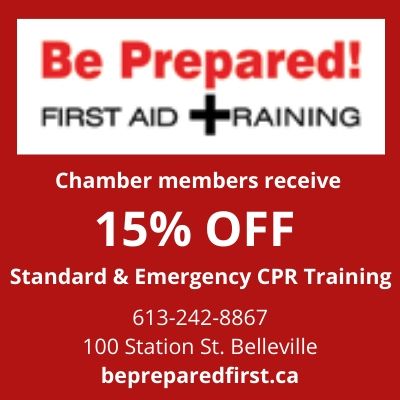Chamber News
Stay informed and discover the latest happenings in Belleville, Ontario with the Belleville Chamber of Commerce News.
“Empowering Belleville” initiative launched to support local entrepreneurs
Belleville, ON – October 3, 2025 – More than 50 business and community leaders came together at the Belleville Public Library to mark the launch of Empowering Belleville, a new initiative designed to bring local entrepreneurs together through conversation. It is one element of a broader interest Ishpreet Singh has in giving back to Belleville, where he has launched his own entrepreneurial journey and saw the opportunity to bridge how two organizations’ work helps others.
Hosted in partnership by the United Nations Association – Quinte Branch (UNAC-Quinte) and the Belleville
October 7, 2025
Policy Matters: The National Day for Truth and Reconciliation
September 30 marks the National Day for Truth and Reconciliation, which commemorates and honours the nearly 150,000 Indigenous children who attended residential schools in Canada, many of whom did not return home.
The designation of this day directly responds to the Truth and Reconciliation Commission’s call to action #80 which states the importance of “… a National Day for Truth and Reconciliation to honour Survivors, their families, and communities, and ensure that public commemoration of the history and legacy of residential schools remains a vital component of the
September 30, 2025
54th Annual Belleville Chamber Golf Tournament – A Day to Remember
The Belleville Chamber of Commerce, in partnership with Habitat for Humanity Prince Edward-Hastings, proudly hosted the 54th Annual Golf Tournament on Friday, September 5, 2025, at Trillium Wood Golf Club, with Elexicon Energy as the presenting sponsor.
The event was a resounding success with a sold-out field of 148 golfers. Despite windy conditions early in the day, spirits remained high as the course buzzed with energy before and after the shotgun start. Tents, snacks, beverages, and hole activities created a lively and welcoming atmosphere, thanks to the many businesses who went the
September 18, 2025
Melanie Cressman taking the reins as the new Executive Director of Humane Society Hastings Prince Edward
Hastings Prince Edward – The Humane Society Hastings Prince Edward is thrilled to announce the appointment of Melanie Cressman as our new Executive Director, effective August 18, 2025. Her proven track record in non-profit leadership, includes the role of Director of Donor Relations at United Way HPE and most recently, the Executive Director of The Children’s Foundation.
With a degree in Agriculture from the University of Guelph, Melanie brings over 20 years of experience in the equine industry, where she developed expertise focused on animal care, husbandry and rehabilitation. Her
August 21, 2025
Guardian Angel announced by Children's Foundation
On March 7st, 2026, The Children’s Foundation (TCF) will celebrate the 26th anniversary of The Guardian Angel Gala by recognizing philanthropic leadership in our community. The Guardian Angel Gala is The Children’s Foundation’s largest fundraiser and supports deserving youth through scholarships and bursaries to support their post-secondary endeavors.
“We are honoured to acknowledge Sam Brady as our 2026 Guardian Angel. His unwavering commitment to philanthropy and their profound impact on our community serves as an inspiring example of true leadership and generosity. We are deeply
July 22, 2025
Other News






















.jpg)
.jpg)
.jpg)
.jpg)
